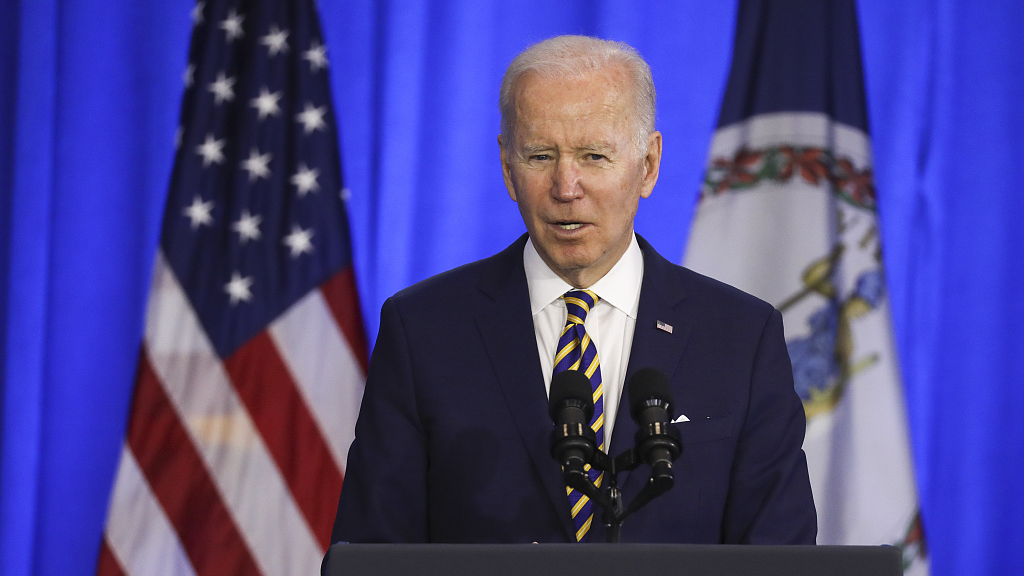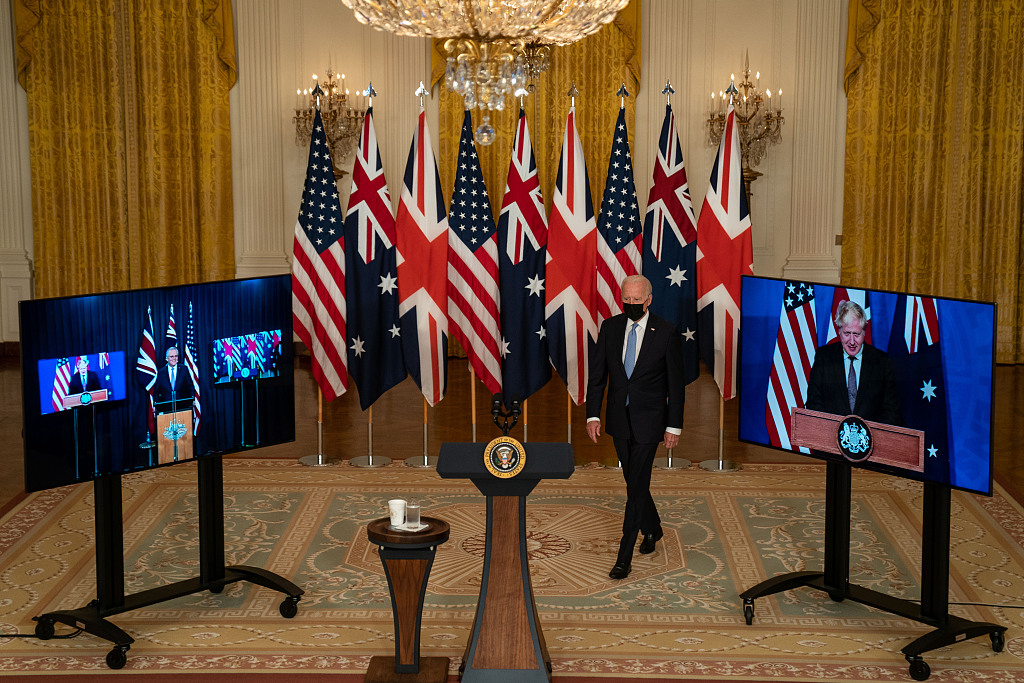
President of the United States Joe Biden visits Culpeper to highlight his work to lower healthcare costs for American families, Culpeper, Virginia, United States, February 10, 2022. /CFP
President of the United States Joe Biden visits Culpeper to highlight his work to lower healthcare costs for American families, Culpeper, Virginia, United States, February 10, 2022. /CFP
Editor's note: William Jones is the former White House correspondent for Executive Intelligence Review and a non-resident Fellow at Chongyang Institute for Financial Studies, Renmin University of China. The article reflects the author's opinions and not necessarily the views of CGTN.
If there was any doubt in anybody's mind regarding the policy of the U.S. government toward China, the issuance of the formal "Indo-Pacific Strategy" by the White House on February 11 makes the point crystal clear: the Joe Biden administration intends to build a wall of containment around China.
The object of the recent trip to Asia by Secretary of State Antony Blinken was to present this strategy paper to the foreign ministers of the Quad, who are viewed as the core of a NATO-like alliance in the Asia-Pacific region. Building on the same group of characters that were instrumental in U.S. containment policy during the period of the Cold War, Biden hopes to also bring other nations into play as well.
The total irony of the situation is that Biden, who has profiled himself as the man that could bring the United States away from its continual wars, is now on the brink of creating military conflict between nuclear powers.
The containment policy toward Russia, with the extension of NATO right up to Russian western borders, has now led to a possible military conflict on the European continent. Arguably, President Biden, in office for a little over a year was not solely responsible for this. Previous administrations had created the basis for this type of development in Europe.
But this grand vision may prove to be something of a gross overreach. What the U.S. seems to be most willing to provide its allies is considerably more military hardware for confronting China, as witnessed in the recent AUKUS agreement with Australia.
The White House paper also talks a lot about creating economic growth and developing science and technology together with the Asian-Pacific nations, but we have seen very little of that during the previous decades.
In fact, until the launch of China's Belt and Road Initiative, infrastructure building in Asia was on the decline, and almost non-existent in many parts of Africa and Latin America. The BRI revived the notion of global development in the entire developing sector, which those "masters" of economic destiny in the London and New York financial centers, had left by the wayside in their search for more ever greater profits from speculation and wage-gouging.
The Asian economies, the Four Tigers, were able to develop, not through British free market liberalism, but through their adoption of the earlier American System industrial policy of Alexander Hamilton and Franklin Roosevelt, policies which the U.S. abandoned with the death of President Kennedy.

U.S. President Joe Biden delivers remarks about a national security initiative to announce that the United States will share nuclear submarine technology with Australia from the East Room of the White House Complex in Washington, D.C., September 15, 2021. /CFP
U.S. President Joe Biden delivers remarks about a national security initiative to announce that the United States will share nuclear submarine technology with Australia from the East Room of the White House Complex in Washington, D.C., September 15, 2021. /CFP
The much-touted UN Development Decade in 1960, which promised so much for the countries of Africa, Asia and Latin America, died not too long after the Kennedy assassination. The workings of the "neoliberal" system during the following decades threw many of these "emerging economies" back into poverty.
And it is only when one of those "emerging economies," China, under the leadership of the Communist Party, began to climb out of poverty, that this vicious circle was broken. Like the American system of Hamilton and Henry Carey, the market was brought into play with the "reform and opening-up" introduced by late Chinese leader Deng Xiaoping, but the direction of development was determined by government policy and by the people's welfare.
With the White House paper priding itself on providing vaccines during the COVID-19 pandemic and taking a forward position on the "green" agenda, the hypocrisy reaches unprecedented heights. Everyone who has followed the developments over the last few years knows full well that the first to insist on making vaccines accessible to the entire world, and acting on that basis, was China.
With regard to infrastructure, President Biden is still working overtime to build a few railroads and water projects in the United States, and is unlikely any time soon to equal the pace of China's BRI.
Trying to prevent China from continuing its development trajectory through punitive tariffs and cutting off technology exports will simply result in slowing the pace of global development for petty – and rather utopian – geopolitical goals.
The BRI has changed the course of history, and Chinese President Xi Jinping's call for a Global Development Initiative (GDI) on support from the UN and most of the developing world. It would behoove the U.S. president to get on the "high-speed rail" of the GDI, rather than trying to "reinvent the wheel" with a Made In U.S. sticker.
(If you want to contribute and have specific expertise, please contact us at opinions@cgtn.com.)

